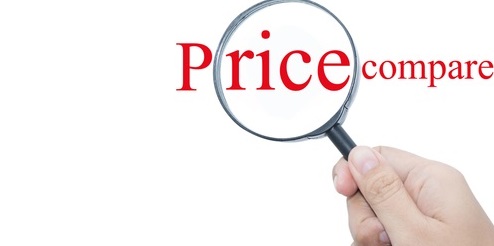Are you getting your money's worth?

We have also learned that it’s not just the price on the label that counts, but what we actually get for our money matters too. That’s whether it’s two-for-one cinema tickets, cuddly toys or, perhaps more importantly, the quality of the service or product we wanted in the first place.
In short, the search for value has become second nature to most of us whenever we’re spending our own money.
In the business environment it is standard practice to market test the cost of big ticket items such as capital expenditure or large IT projects. However, it’s perhaps less common for companies to compare the cost of the goods and services they buy for employees. The spend on employee benefits has increased significantly in recent years, particularly since the arrival of auto-enrolment, so how can companies be confident that they are getting value for money?
How much are your employees paying?
Members of defined contribution pension plans are subject to an annual charge taken from their fund by the pension provider. Regulations now require that sponsors operating trust-based plans ensure that the charge applying to the default fund is no higher than 0.75% pa, with the same limit applying to contract-based arrangements used as Qualifying Workplace Pension Schemes (QWPS).
Since the majority of pension plans used for auto-enrolment are defined contribution arrangements, employers and trustees must satisfy themselves that the charge for the default fund is within the cap.
However, there are other costs associated with workplace pensions that can be more difficult to discover. For example, is there a charge for members who want to transfer their funds to another pension plan? Are there additional charges or penalties if a member decides to take early retirement? And what are the management charges for investment funds outside the default?
Who is responsible for measuring costs and assessing value for money?
Regulations that came into force in April 2015 laid out new duties for trustees who manage pension schemes.
These new governance standards include a requirement “to ensure value for money to members”, so whilst members usually have the freedom to select their own choice of investment fund, trustees should always ensure that the default fund charges are within the charge cap, and that other funds also represent ‘good value’ to members.
Similar rules apply for contract-based schemes, so employers should check what charges their employees are paying for any schemes that are used for auto-enrolment to ensure that the default fund charge is within the charge cap.
Whatever type of pension arrangement a company operates for its workforce, it should be remembered that the pursuit of value for money is a key element in helping to achieve “good member outcomes”.
What about the employer’s costs?
Many companies are still getting used to the cost of paying extra pension contributions as a result of auto-enrolment. In addition, invoices have been arriving from payroll companies, pension consultants, independent financial advisers and employment lawyers, all involved in helping the company adapt to the new pensions environment.
This might have come as a surprise to companies who haven’t been used to paying for advice and assistance in running their pension scheme. Many advisers’ costs (and more) were covered by commission payments received from insurance companies and pension providers, which means that pension scheme members often end up footing the bill for services provided to their employer.
However, the ever-changing commission regime finally ended for QWPS in April 2016. This means that companies and their pension advisers have been involved in sometimes challenging negotiations over the last few years, just at the time when pensions have been moving up the company agenda.
Many companies have seen little option but to agree fees in order to ensure that assistance is on hand when designing and implementing their auto-enrolment strategy, with no time to run a proper procurement process first.
Now that the auto-enrolment dust is beginning to settle and with re-enrolment looming, companies should be reviewing the agreements they have with their pension advisers to check that their costs are competitive and that service delivery is of the right quality. This will require a re-examination of the duties and responsibilities of all parties, so that there is clarity on who should be doing what, by when and at what cost for each part of the service provided.
It’s not just about the price
Running a detailed audit of services from advisers should help companies to understand how effective they are in complying with the myriad of regulations that cover workplace pension arrangements. Benchmarking costs against other advisers will also help in checking that fee levels are competitive and that the company is getting value for money.
However, it would be a mistake to focus on cost alone. Quality is vital to ensure smooth and compliant running of a pension scheme – it might be worth increasing outlay on fees if the end result is greater efficiency and less management time spent on resolving problems.
Either way, if you don’t check, you’ll never know, so… “go compare!”
Stephen Phillips is client director at Punter Southall Aspire.
This article was provided by Punter Southall.
Supplied by REBA Associate Member, Punter Southall Aspire
We're a major new workplace pensions & savings business.







